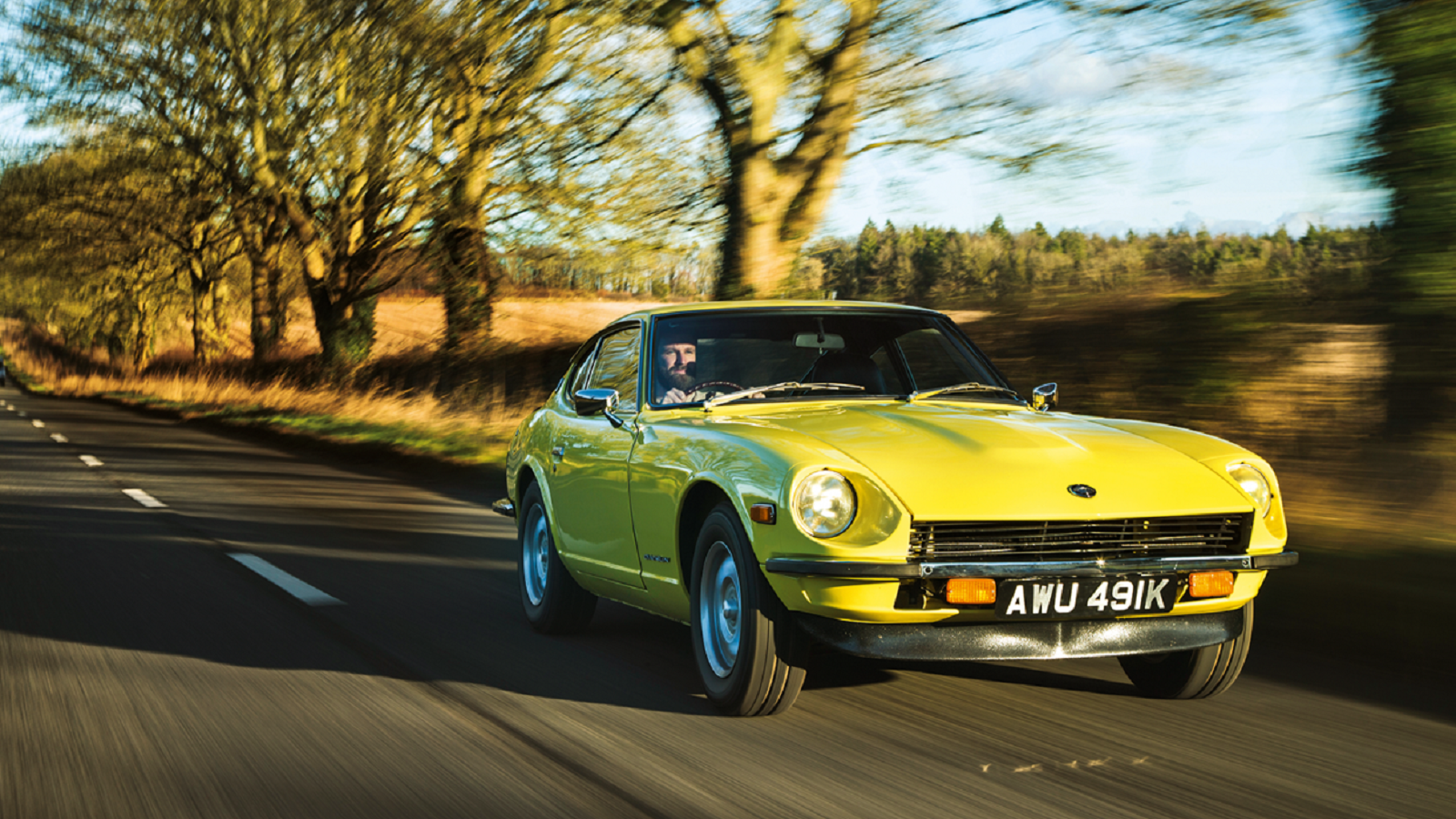
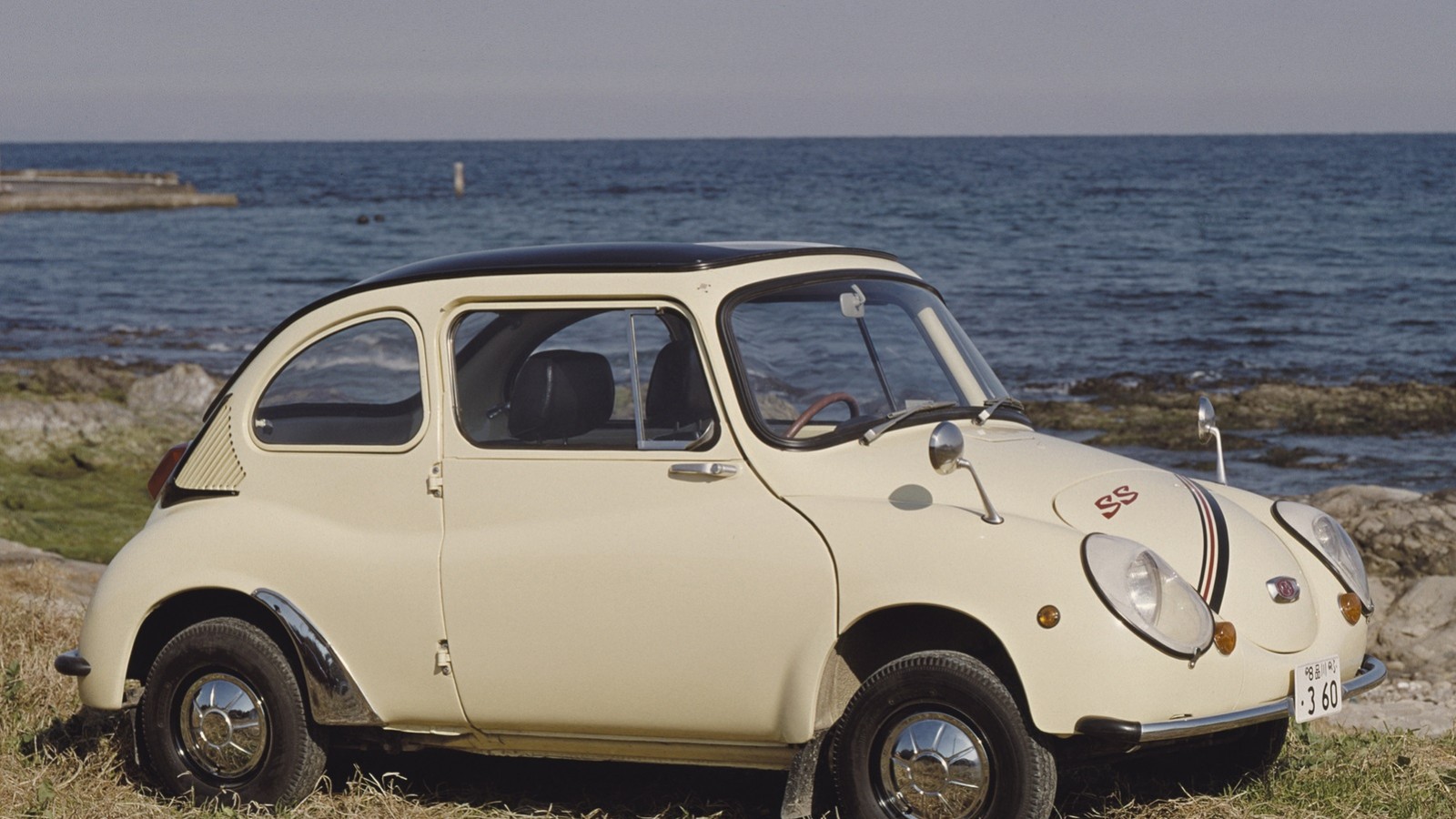


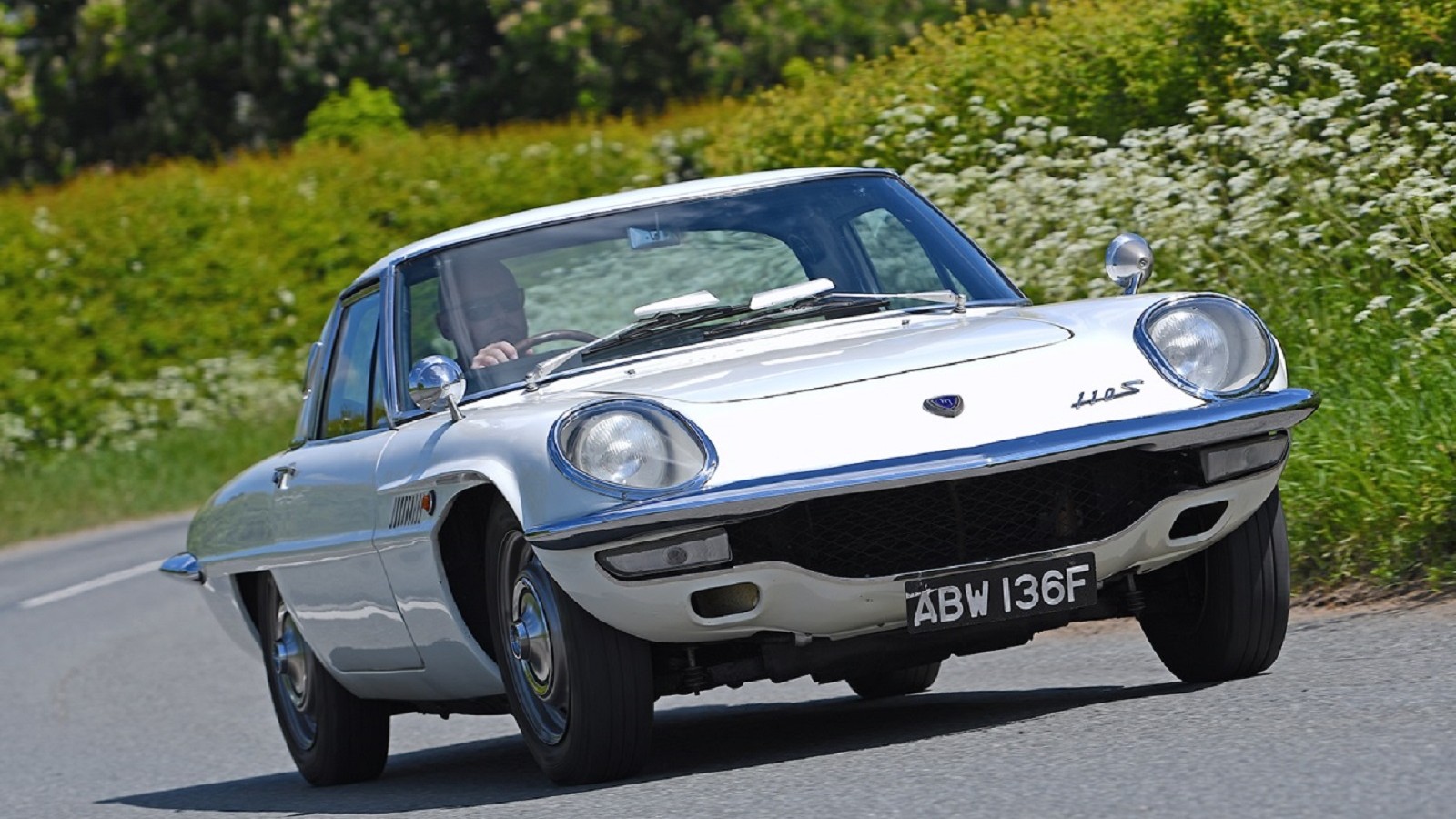
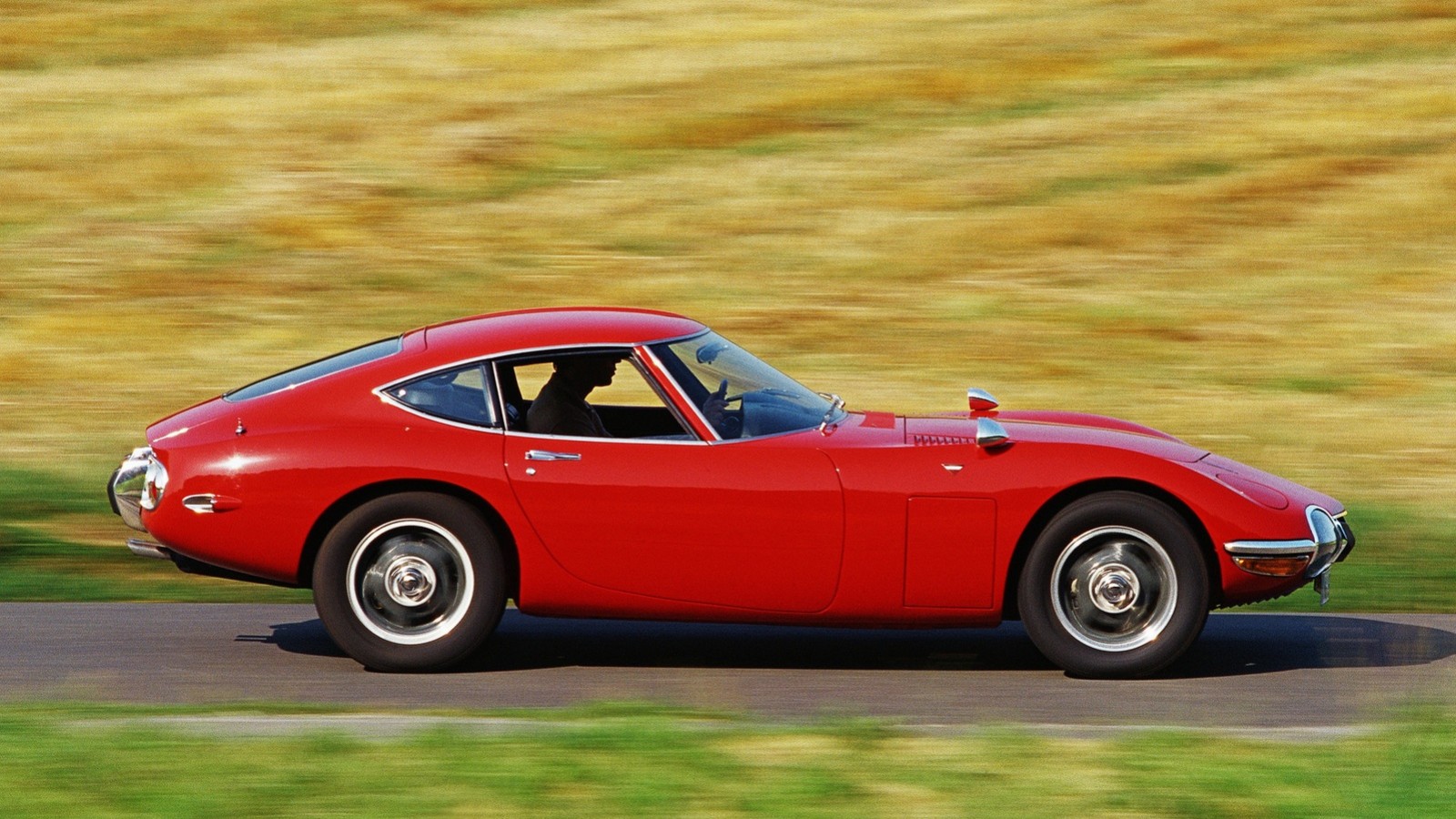

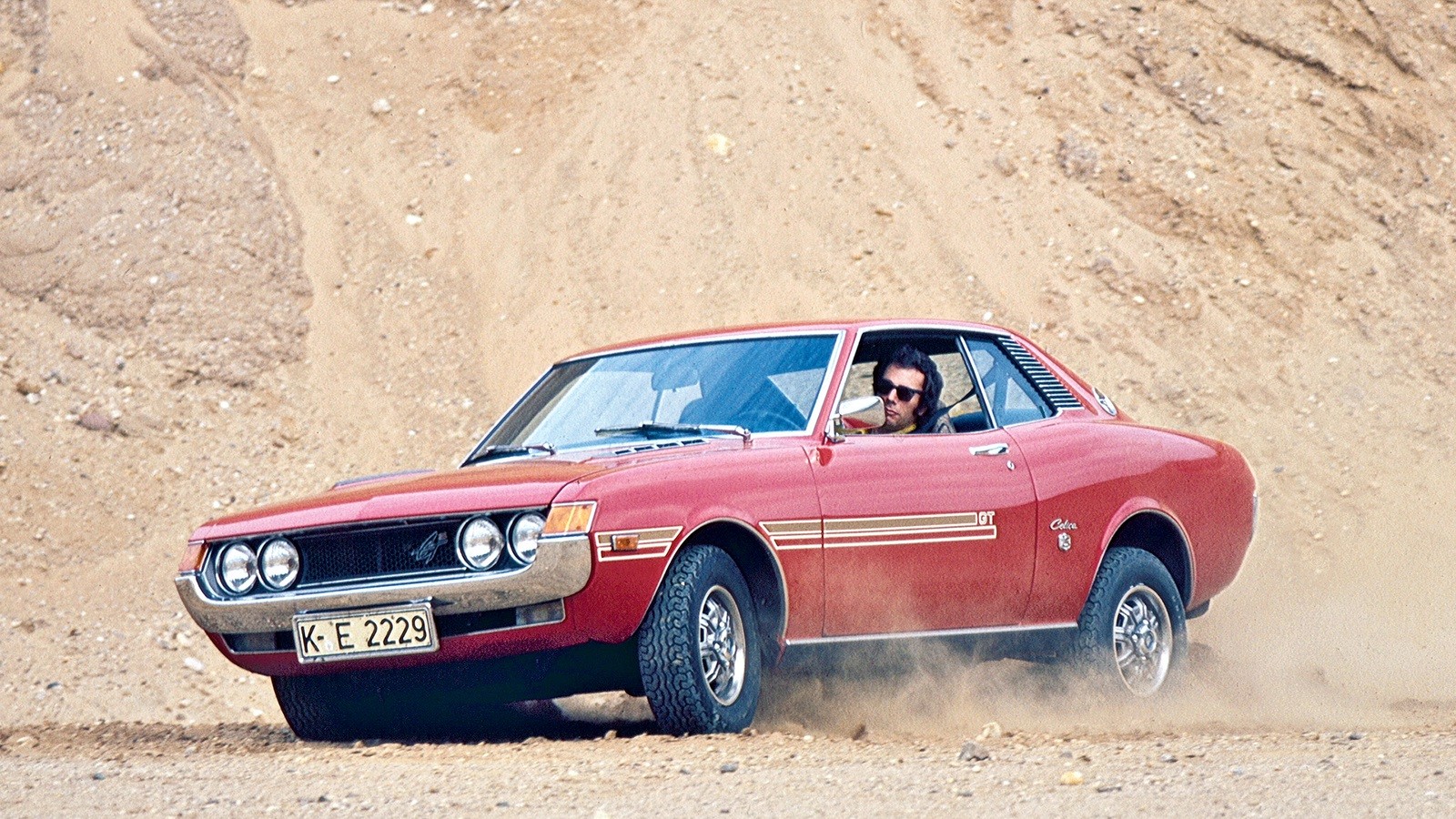

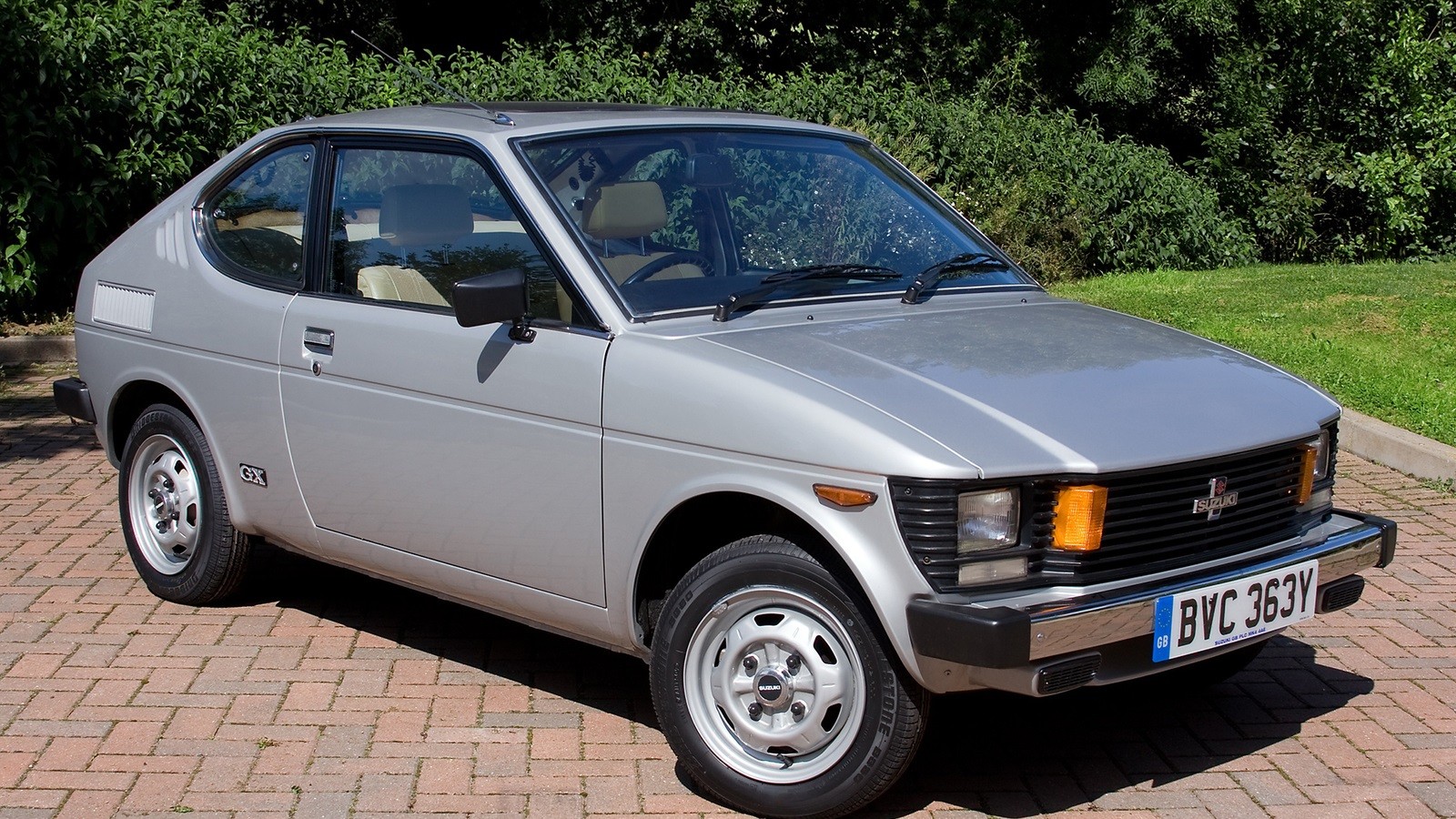

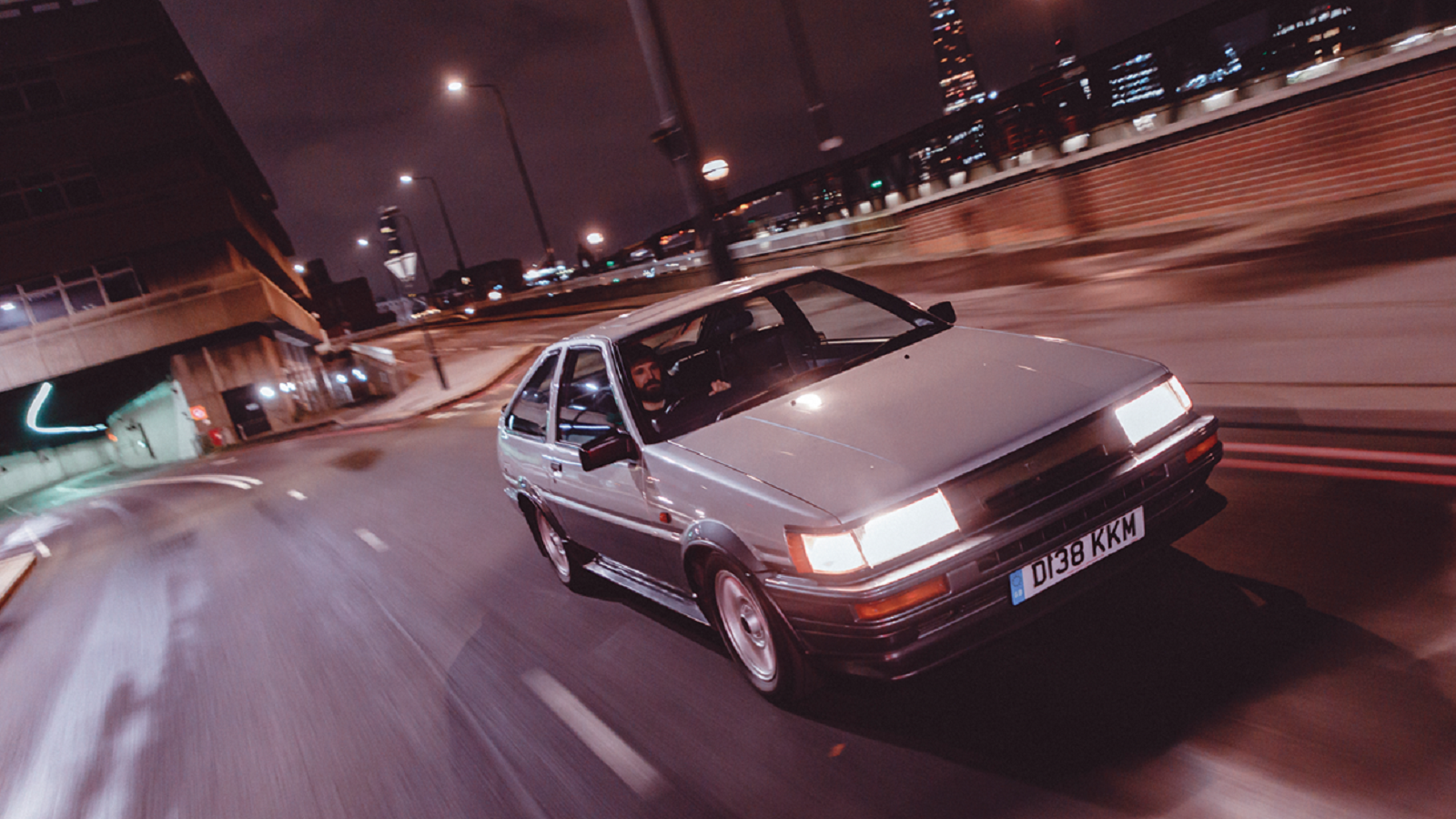
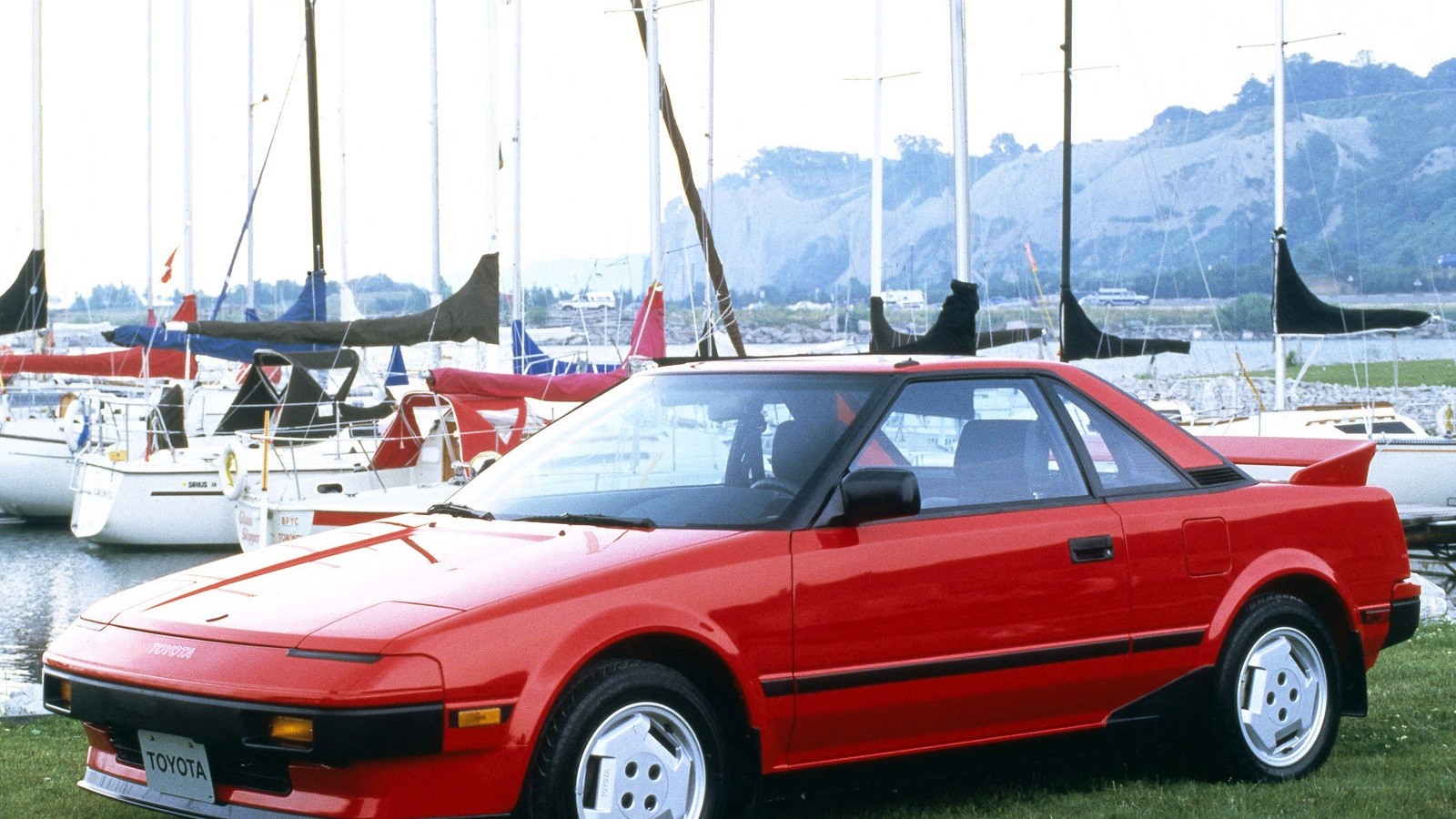
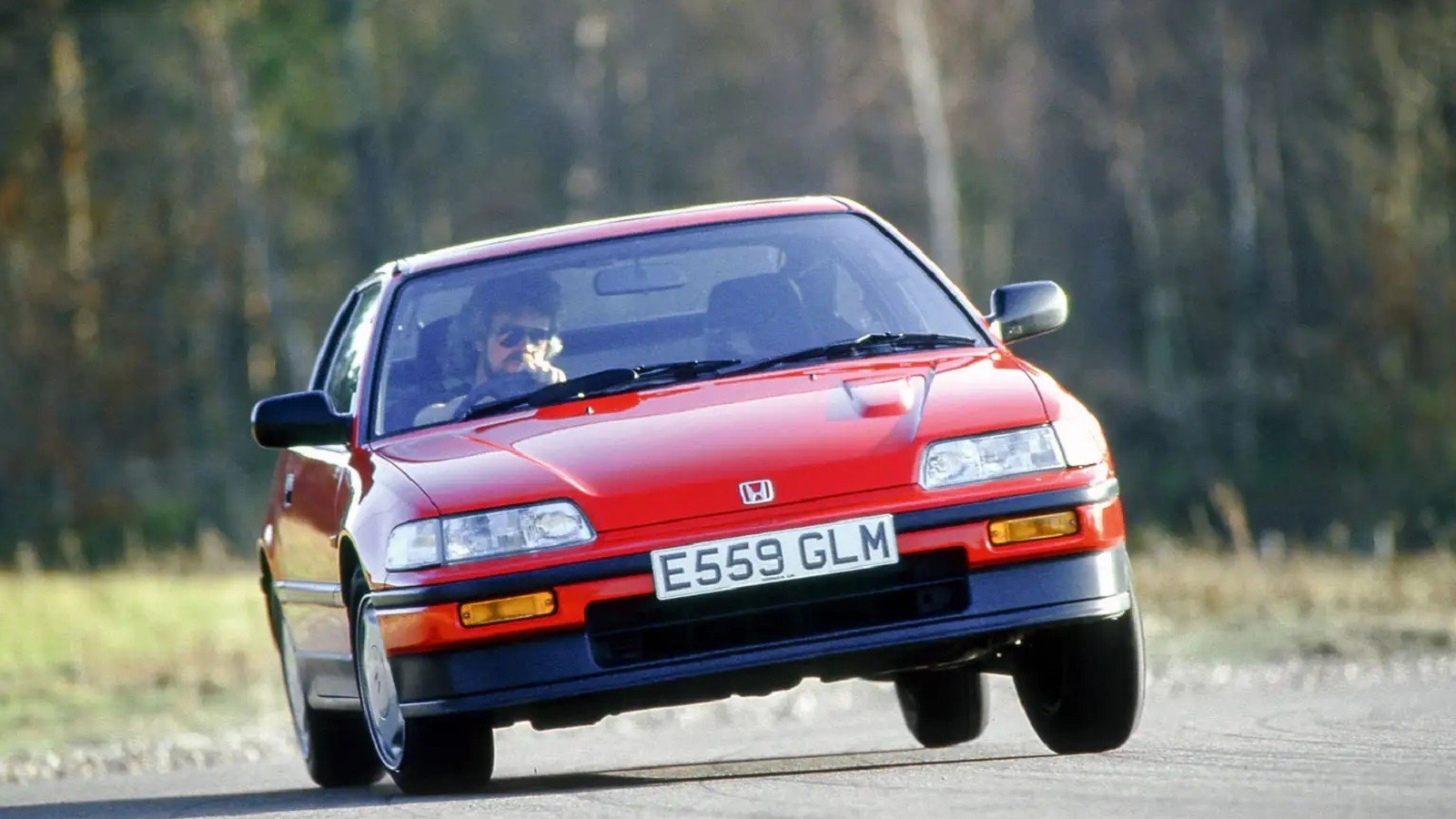
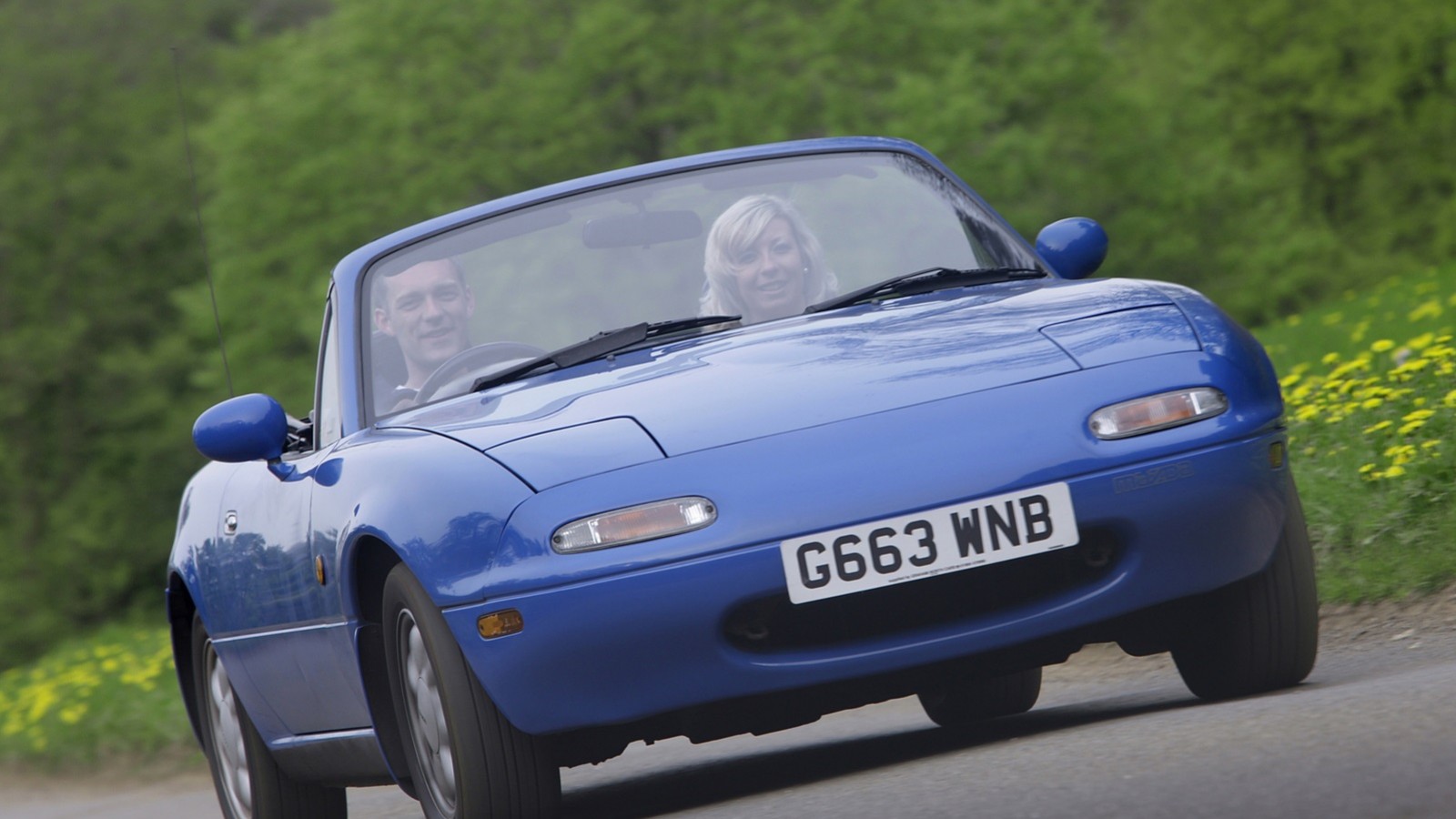

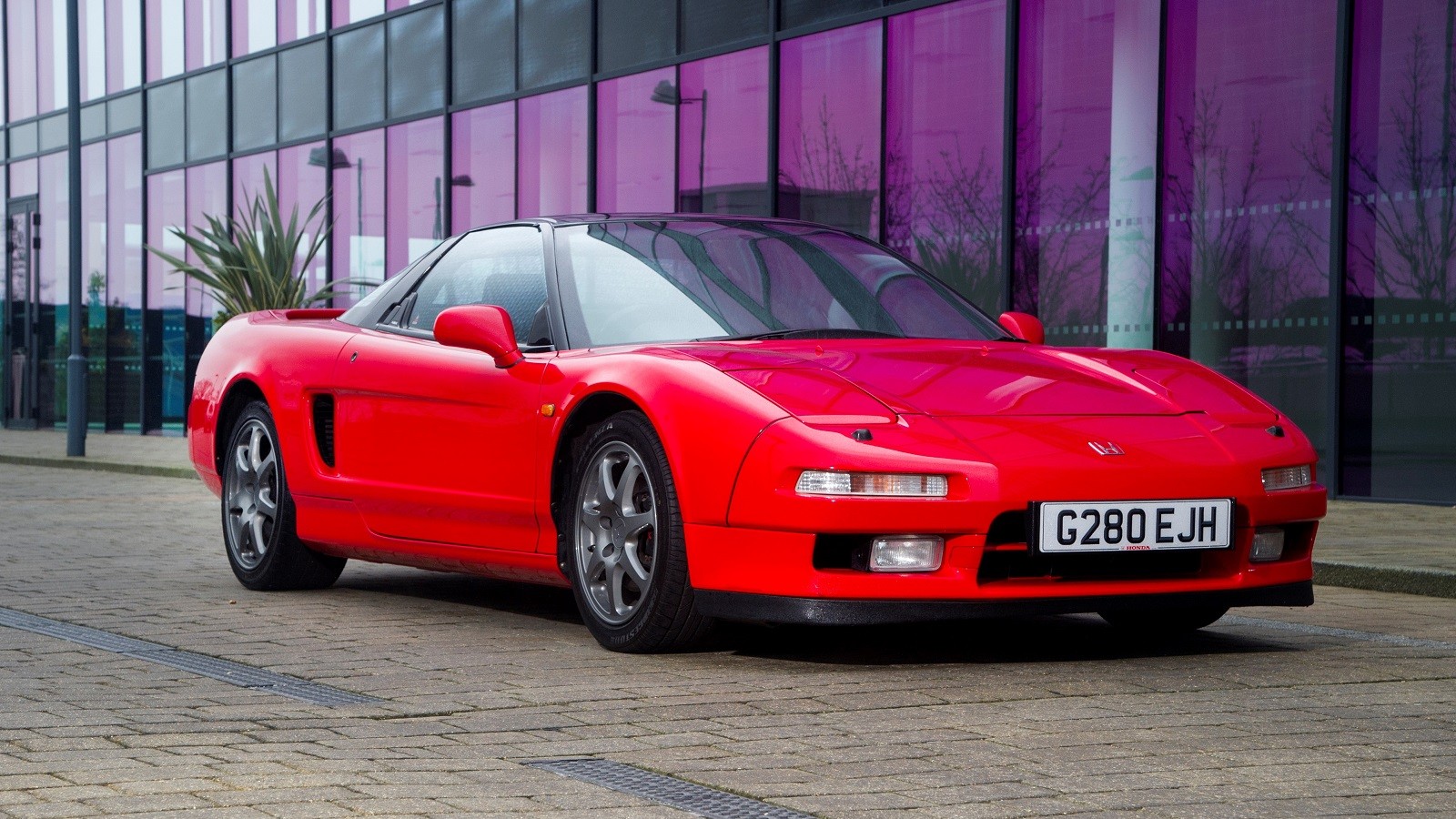
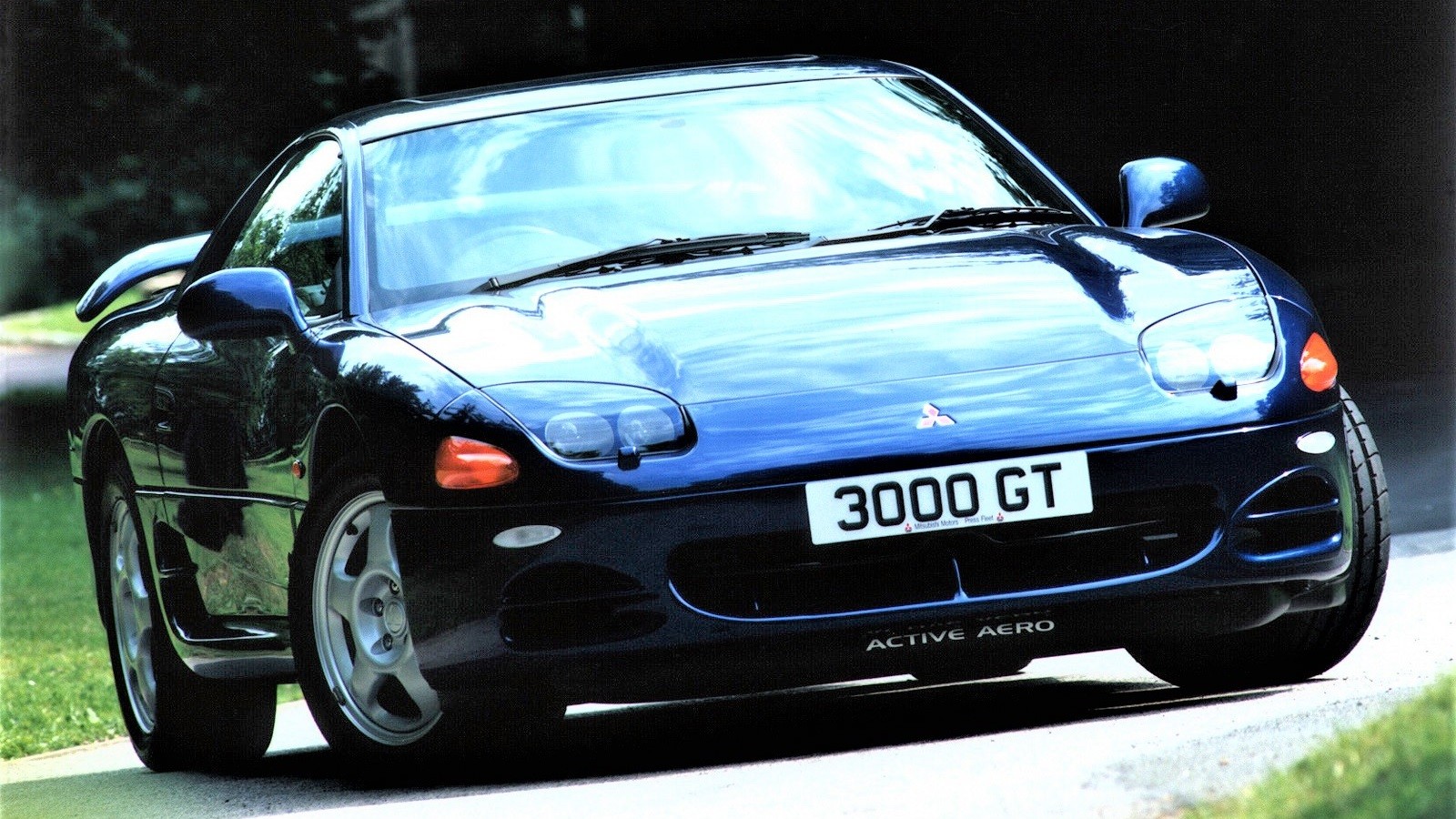
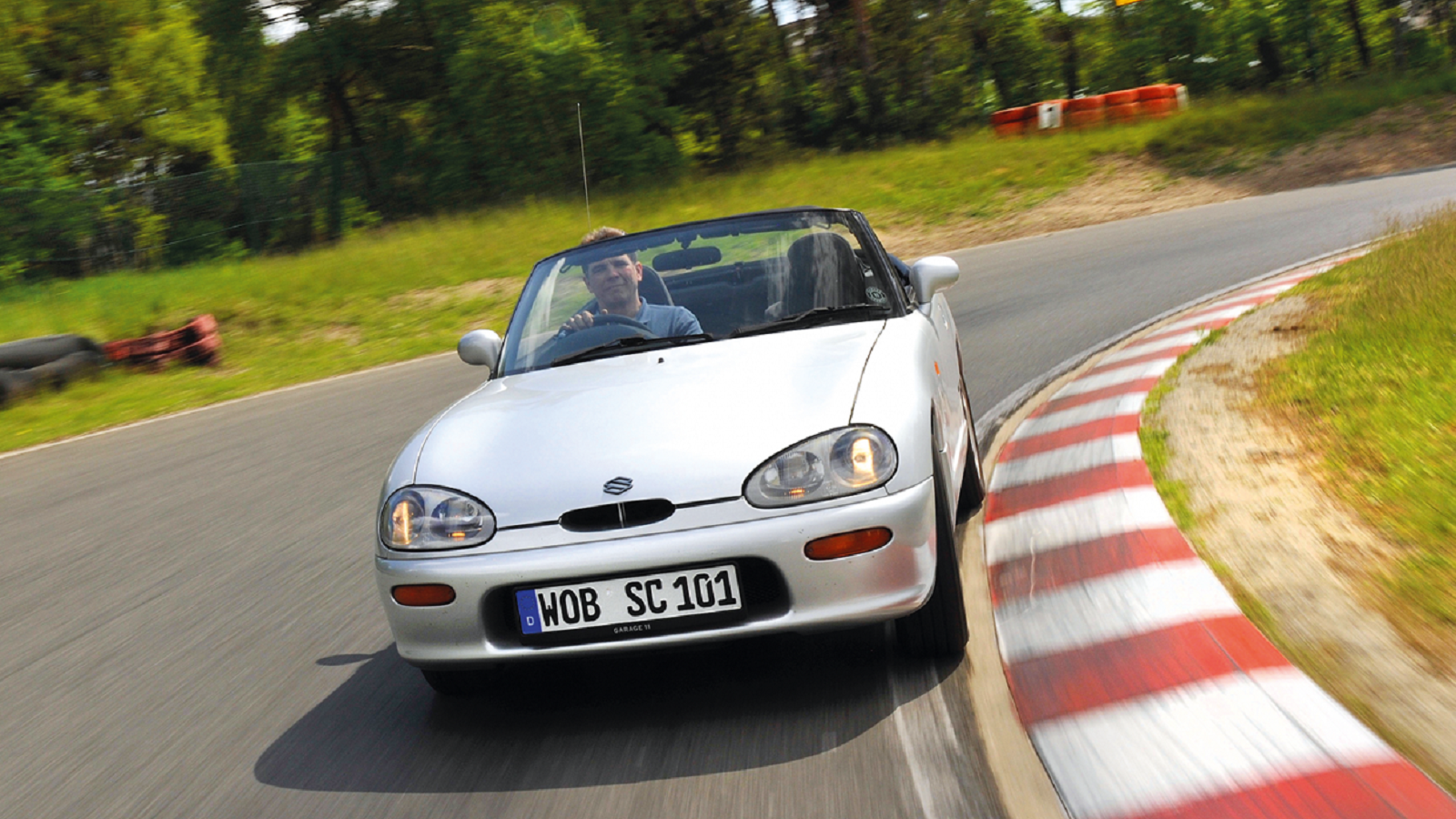
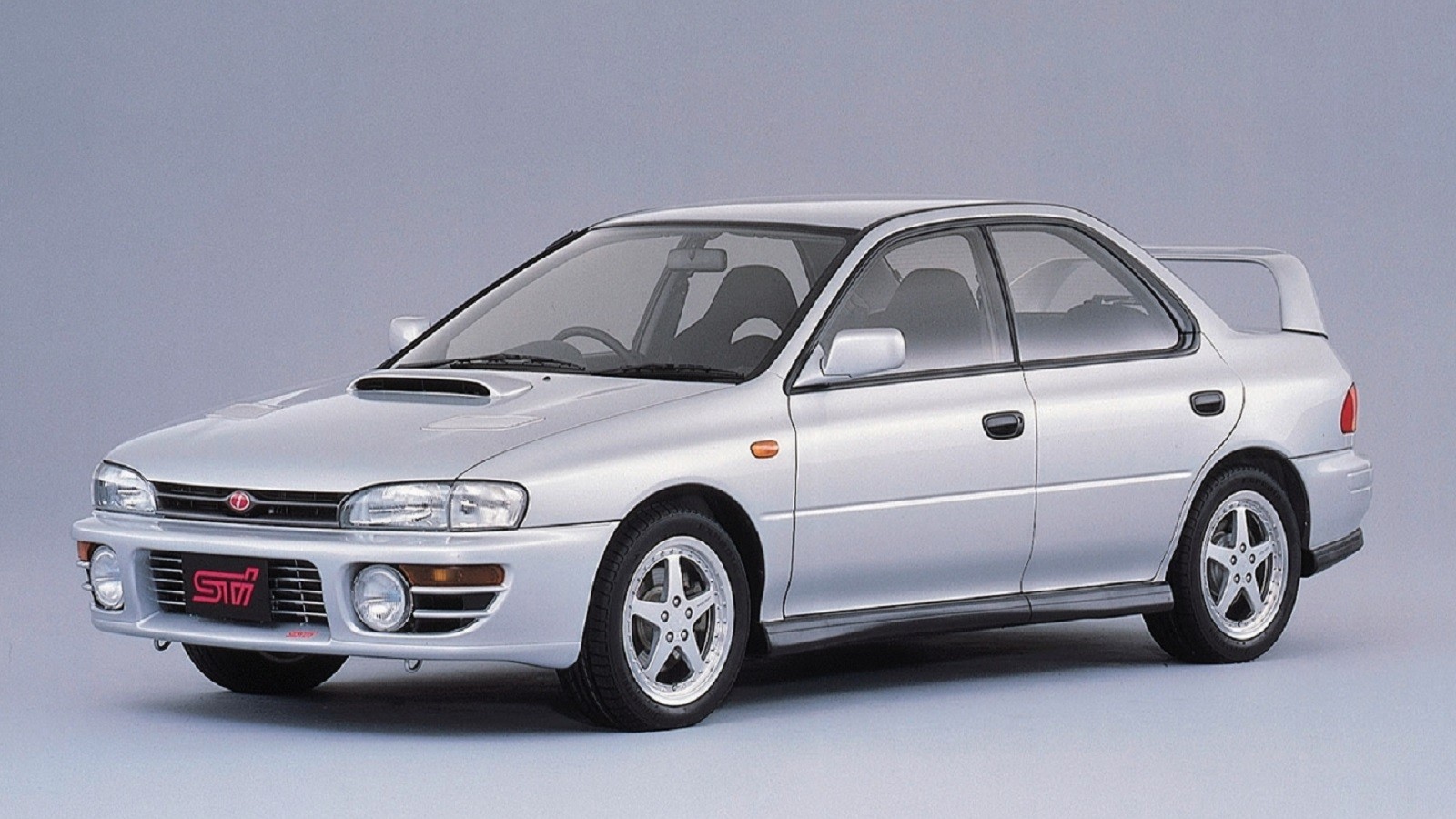
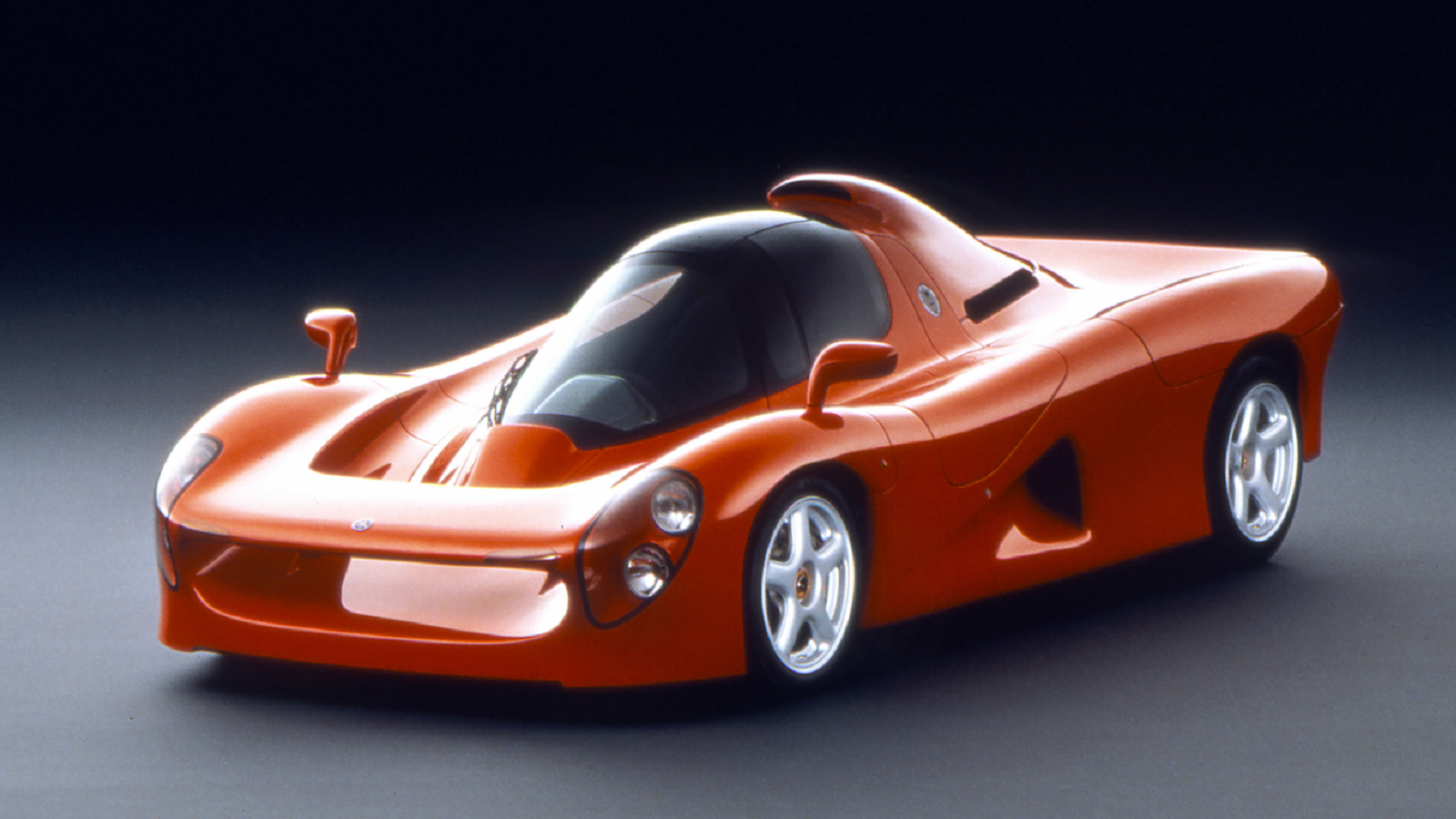
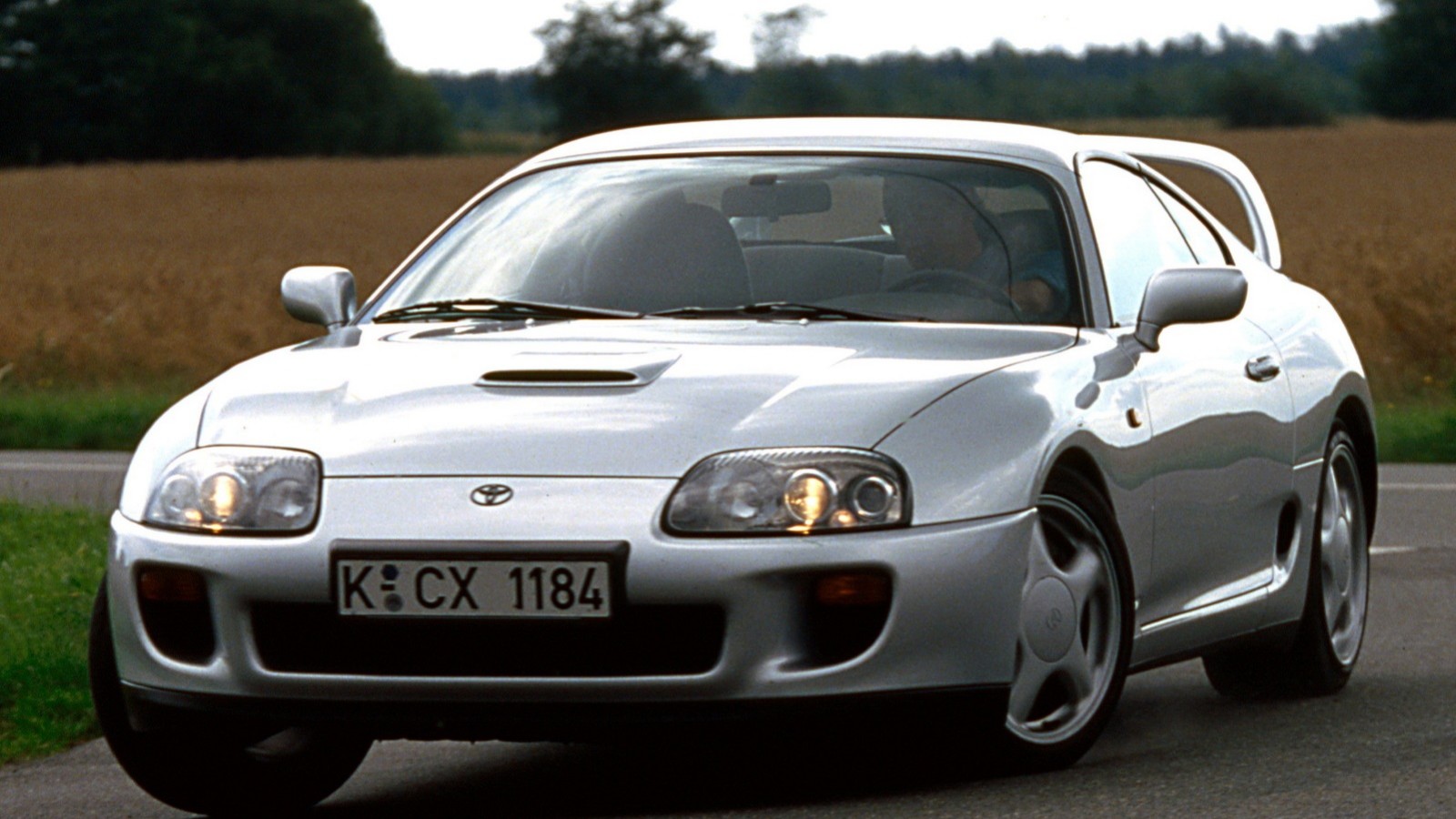
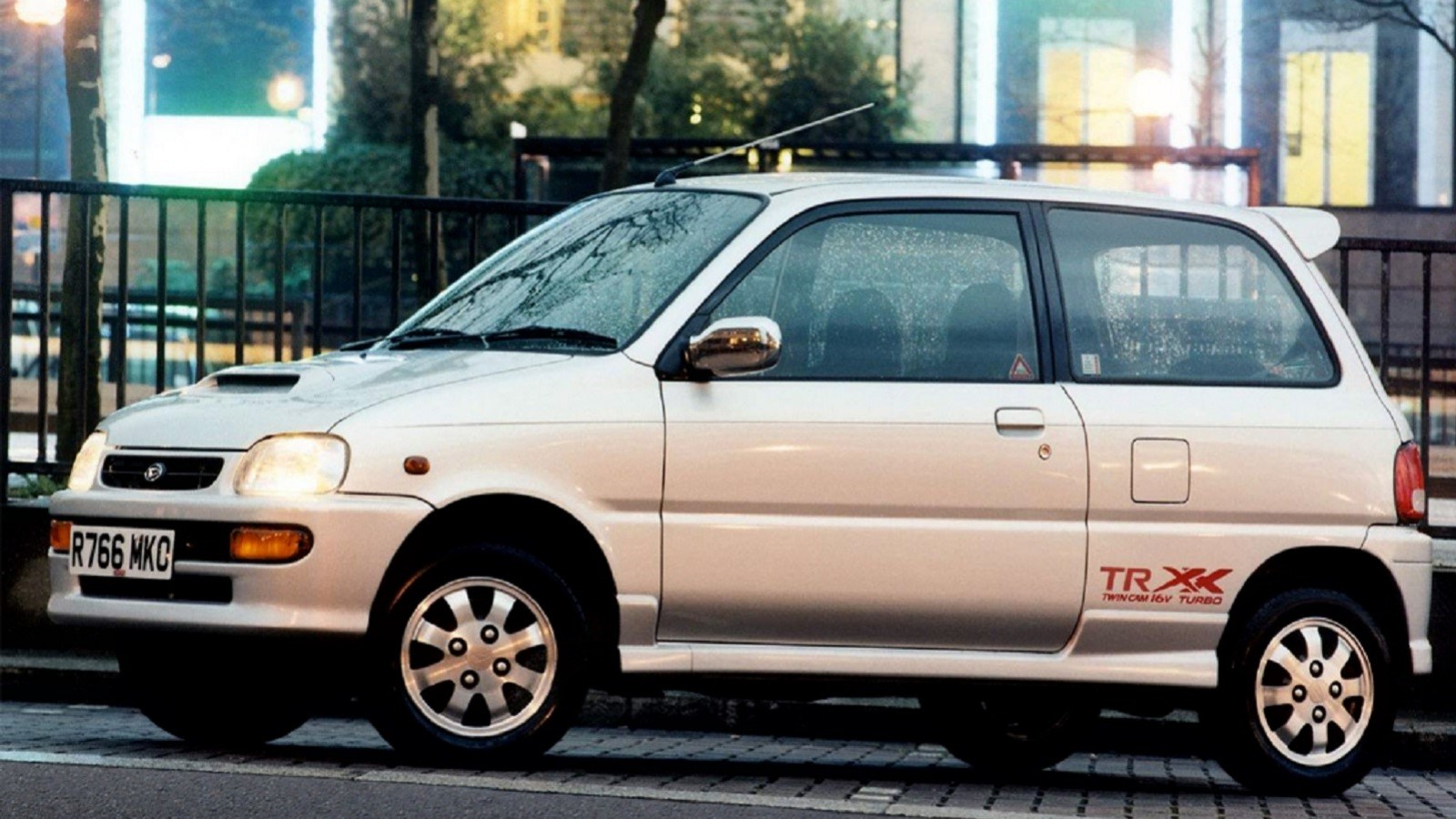
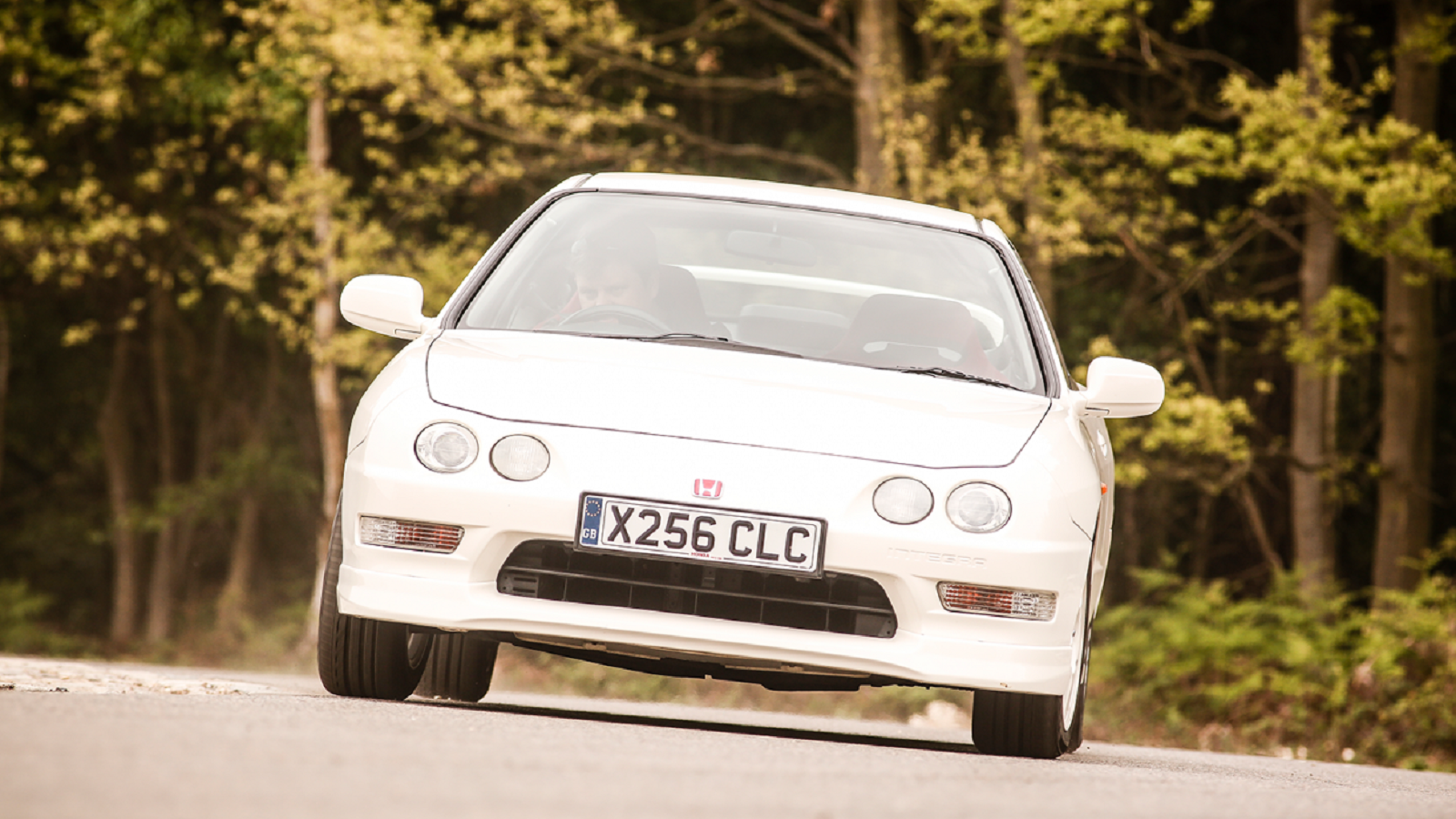
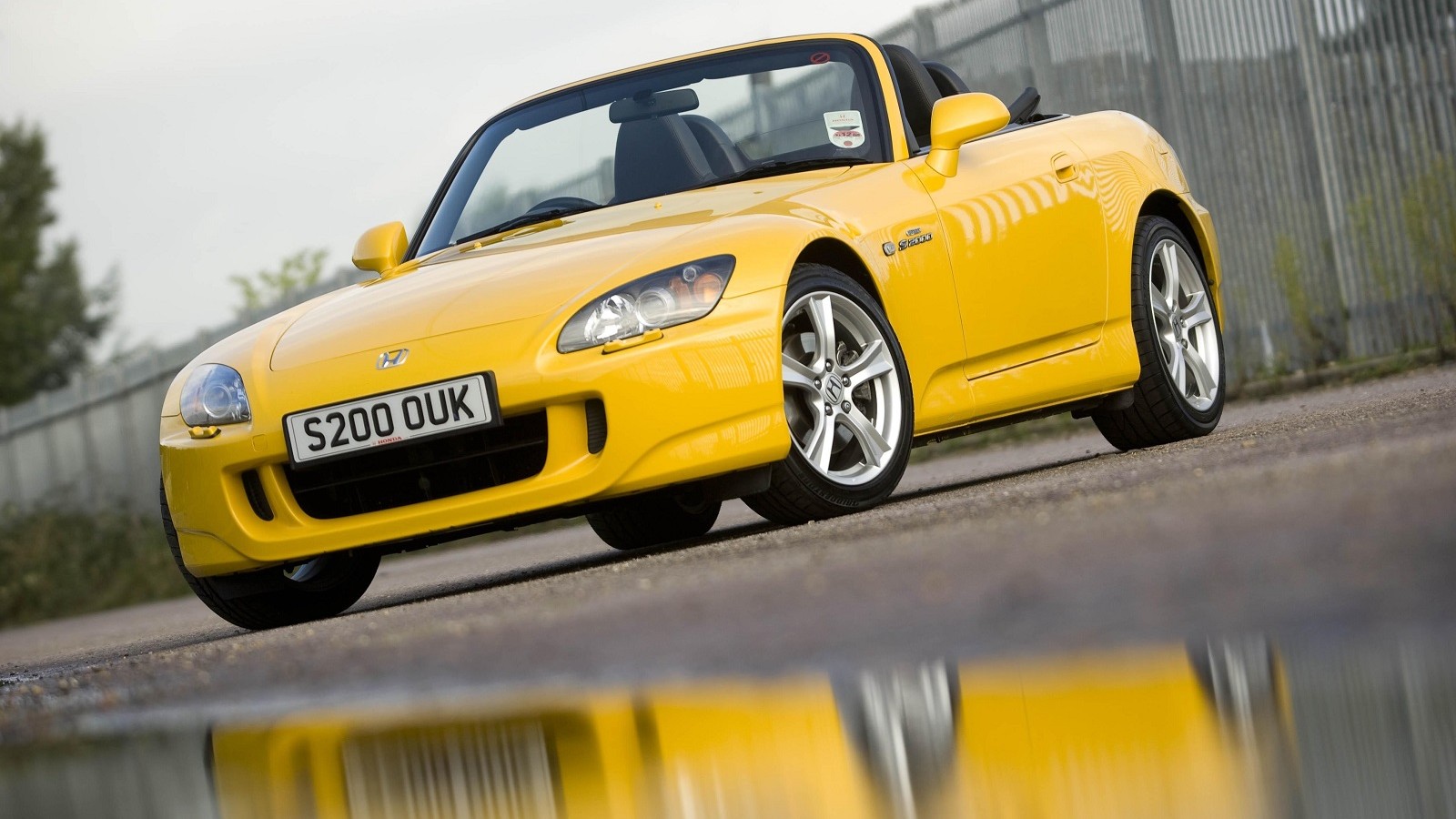
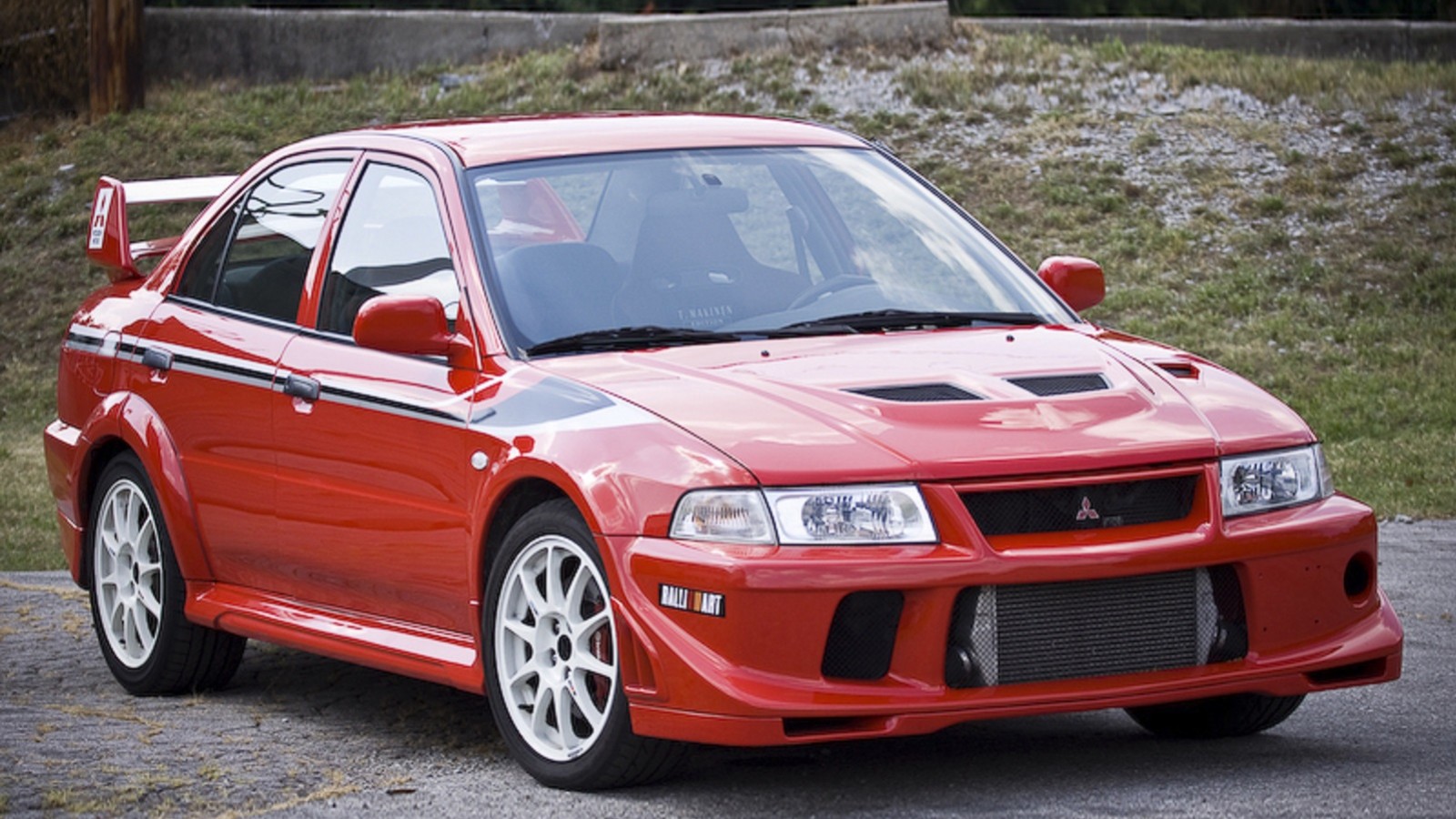
Celebrating Japan’s best
Sometimes overlooked, Japan’s automotive back catalogue holds plenty of appeal for classic car fans.
From oddballs and rarities to cars that sold in huge numbers, there’s a Japanese classic to suit all tastes.
Here are 25 of the country’s best 20th-century classics, presented in chronological order.
1. Subaru 360 (1958)
Subaru may be well known for its four-wheel-drive cars, but it all started for the firm with the 360.
Built as a kei class car to offer motoring within strict rules on size, the 356cc two-stroke parallel-twin engine offered just enough performance to see the 360 to 59mph while returning around 45mpg economy.
As you’d expect of Subaru, there were some advanced ideas incorporated into the 360, such as independent suspension all-round and a glassfibre roof panel to save weight.
In production from 1958 until 1971, 392,000 Subaru 360s were built and it now enjoys a cult-like following.
2. Datsun Sports Fairlady (1962)
Datsun can trace its history back to 1931, but it wasn’t until the Sports Fairlady arrived in the early 1960s that the company began to make a big impression.
Its handsome lines gave the MGB Roadster a run for its money, particularly in the vital US market where the Datsun proved to be a big hit.
Initially offered with a 1.5-litre engine and then a 1.6, the Sports Fairlady was at its best with the 135bhp 2.0-litre. It gave performance way beyond what a standard MG could offer, and this pretty two-seat sports car paved the way for Datsun’s more ambitious 240Z.
3. Honda S800 (1966)
Honda drew on its ’bike know-how to come up with the S800’s defining element: a high-revving 791cc four-cylinder engine.
This tiny motor would scream to 8000rpm, producing 70bhp with complete reliability. It had to be kept whirring away to give its best, but even then it could still return 35mpg.
Sold as a coupé or a roadster, the pretty S800 was more than a match for the MG Midget or Triumph Spitfire, yet Honda only made 11,536 as its pocket-sized sports car fell foul of US emissions regulations and missed out on its most important market.
4. Mazda Cosmo 110S (1967)
Mazda’s reputation for engineering innovation was founded on the Cosmo 110S. Aside from its dramatic styling, the real star was the twin-rotor Wankel engine, which made it the first production car to use this type of motor and beat the NSU Ro80 to this title by a whisker.
The engine gave 110bhp and exciting performance for the time, but it also proved fragile and labour intensive to maintain.
The result was Mazda only made 1176 Cosmo 110S cars, but it set the company on a course with rotary engines that resulted in some great models.
5. Toyota 2000GT (1967)
Toyota’s first sports car was the diminutive Sports 800, so the arrival of the 2000GT was a huge statement from a company better known for its well-engineered but humdrum saloons.
The low-slung 2000GT was as good to drive as it looked, too, and was powered by a brilliant 2.0-litre straight-six developed with Yamaha.
Only built as a coupé, Toyota did build a pair of roadsters to be used in the James Bond film You Only Live Twice. The reason for the open-top conversion was that Bond actor Sean Connery was too tall to fit in the coupé. Inexplicably, given the Bond appearance and looks of the 2000GT, a mere 337 were produced.
6. Datsun 240Z (1969)
Datsun timed the launch of its 240Z to perfection. As many affordable European sports cars were on the wane, here was a coupé with chiselled good looks and feisty performance.
Its 2.4-litre straight-six motor sounded great and delivered 0-60mph in 8.3 secs, while the Albrecht Goertz styling made it a must-have model for style-conscious fans.
More than 150,000 240Zs were built during its five-year run, making it the rarest of the Z line. By the time production of the Datsun Z series of sports cars ended in 1980, more than 600,000 had been built and made the Japanese range the best-selling sports car in the world, until the Mazda MX-5 usurped it.
7. Toyota Celica GT (1970)
Just as Ford used the Cortina as a base for its Capri, Toyota took the humble Carina floorpan and dressed it up with the Celica’s coupé body.
Its taut lines quickly found favour, especially in the US thanks to its muscle-car styling, and the first-generation Celica went on to sell more than 750,000 cars in seven years.
The Celica wasn’t just a showroom success – it proved very able on the track and on rally stages. Revvy engines underlined the Toyota’s credentials, especially if you chose the 2.0-litre motor with 130bhp.
8. Honda Z600 (1973)
Looking like a scaled-down Honda Civic, the Z600 was primarily built to meet Japan’s kei-class regulations, but also found popularity outside its home turf.
All Z600s that made their way to the UK were painted in bright orange with a black stripe, which gave it a sporting feel at odds with the 599cc air-cooled parallel-twin engine.
That motor managed to make all of 31bhp, which meant 0-60mph took a seemingly never-ending 32.6 secs. However, low running costs, reliability and excellent fuel economy endeared the Z600 to enough buyers for 40,586 to roll out of Honda’s factory.
9. Suzuki SC100GX ‘Whizzkid’ (1977)
Suzuki took its domestic market Fronte model that made do with a 539cc engine and transformed it into the SC100GX ‘Whizzkid’ with a 47bhp 970cc motor.
While not outright fast, this was a fun car that could make swift progress if the driver was happy to work the engine hard.
The Whizzkid also came with a generous amount of standard equipment for the time, as well as front disc brakes as standard to underline its sporting ability. This made it an intriguing and unusual alternative to a Mini or Fiat 126.
10. Mazda RX-7 (1979)
After the Cosmo 110S, it took Mazda another five years before it tried again with a rotary-engined sports coupé.
This time, it hit the bullseye with the first-generation RX-7. With looks to rival the Porsche 924’s, it also had the pace to stay with its German rival thanks to 105bhp at first. From 1981, that improved to 115bhp and a rise in top speed to 125mph.
The rotary motor’s poor fuel economy didn’t hold the RX-7 back from being a great car to drive, helped by its 50:50 front-rear weight distribution. This dynamic ability coupled to the Mazda’s neat looks meant the first-generation RX-7 found 471,009 buyers.
11. Toyota Corolla GT – AE86 (1983)
The AE86 denomination is important to this rear-wheel-drive Toyota coupé, because as there was also a front-drive Corolla GT hatch.
Confusing for buyers at the time perhaps, but the AE86 was the one that became the favourite thanks to its keen performance and tail-happy driving style.
Toyota’s rev-hungry 1.6-litre engine made a useful 122bhp, giving 0-60mph in 8.5 secs and 122mph.
Often used for rallying, the Corolla GT also became a mainstay of the early drift scene, and is now highly regarded among collectors.
12. Toyota MR2 (1984)
The first MR2 really was a bolt from the blue, given Toyota was largely known for its staid saloons and hatchbacks.
Suddenly, here was an affordable, desirable, mid-engined sports car that also offered unerring reliability and ease of use. Only the slightly cramped cabin warranted comment at the time, but it didn’t put off 166,104 buyers worldwide.
As Japan’s first mid-engined production car, the MR2 would stand out, but it was more significant for the fine handling this layout gifted the car.
It also enjoyed peppy performance from Toyota’s lively 122bhp 1.6-litre twin-cam engine, which was fitted with an optional supercharger in some markets, but not the UK.
13. Honda CRX 1.6i VTEC (1988)
The Honda CRX had been around since 1984, but it wasn’t until the arrival of the VTEC model in 1988 that this compact coupé gained the bite to match its bark.
Using variable valve timing, the 1.6-litre engine produced 150bhp at a giddy 7600rpm and would rev all the way to 8000rpm. In the lightweight CRX, it meant 0-60mph in 7.2 secs and 138mph flat out.
Those figures were enough on their own to make the CRX 1.6i VTEC stand out, but this small coupé also handled well enough to out-point most contemporary hot hatches and sports cars.
14. Mazda MX-5 (1989)
Introductions to the Mazda MX-5 are not really required, but it’s worth bearing in mind this roadster was a bit of a gamble for the Japanese firm at its launch in 1989.
Hot hatches were all the rage, so a two-seater open-top that clearly aped the original Lotus Elan could have been met with indifference.
Instead, the MX-5 tapped into a huge demand for a simple, fun sports car with a zippy engine, rear-wheel drive, and just enough performance to deliver huge fun on country roads.
It’s testimony to how right Mazda got it with the first MX-5 that so many rivals were forced to create their own similar sports cars.
15. Nissan Skyline GT-R (1989)
Both ‘Skyline’ and ‘GT-R’ have become shorthand for Nissan’s bully-boy supercar baiter. There had been earlier models with the name, but 1989’s RB32 set the template with its punchy turbocharged six-cylinder engine and seemingly physics-defying four-wheel-drive handling.
Nissan was quick to capitalise on its new car’s ability on the race track, dominating Group A categories around the world. On the road, it was just as effective at ousting the opposition as it showed technology could work in harmony with brute force, which resulted in sales of 43,706 RB32 Skyline GT-Rs.
16. Honda NSX (1990)
The Honda NSX was dubbed the first everyday supercar shortly after its launch in 1990.
This faint praise hid the true compliment that here was a properly quick car you could use without fretting about it breaking down or bankrupting you when the next service came round.
Honda used all of its huge engineering nous to create the NSX – and most parts were bespoke to this mid-engined machine. The original 3.0-litre V6 model was good for 0-60mph in 5.3 secs and 157mph, and it still feels perfectly in tune with modern driving.
Never a sales success when new, the NSX is now rightly appreciated for just how special it was.
17. Mitsubishi 3000GT (1990)
The list of technology included with the Mitsubishi 3000GT would be impressive today. In 1990, it was nothing short of sensational for a road car to come with four-wheel drive, four-wheel steering, electronically controlled suspension, ABS anti-lock brakes and active aerodynamics.
All of this was on top of the 3000GT’s quad-cam 3.0-litre V6 engine that officially produced 286bhp, though this was a nod to the notional limit imposed by Japanese car makers on maximum power output.
Real power was more than 300bhp, which resulted in 0-60mph in 5.8 secs and a top speed of 155mph to give the entire contemporary Porsche range much to think about.
18. Suzuki Cappuccino (1991)
The Cappuccino revived the spirit of the Honda S800, even if it didn’t quite provide Suzuki with a rival to the Mazda MX-5.
Its tiny dimensions were well disguised by its neat styling, while the clever folding roof made it easy to switch between an open or closed cabin. The Cappuccino also came with air conditioning, which was rare for the time in a car of this size and price.
Just as unusual was the 657cc three-cylinder engine that made 63bhp with the help of a turbocharger. Happy to rev hard through hits five-speed manual gearbox, the Suzuki could go from rest to 60mph in 8.3 secs, though top speed was just 93mph.
19. Subaru Impreza Turbo (1992)
A classic almost the moment the first one rolled off the production line, the Subaru Impreza Turbo went on to earn legendary status thanks to its success in the World Rally Championship. A starring role in the growing home video-game market didn’t hurt the Impreza, either.
The light, compact Impreza body coupled to a punchy 2.0-litre flat-four engine gave it impressive performance, grip and handling.
Earlier cars are more subtle, while later versions sprouted extra wings and bulges, but all are superb to drive. A car that doesn’t just live up to the hype, but goes beyond it.
20. Yamaha OX99-11 (1992)
Usually thought of as a motorcycle maker, Yamaha has had a hand in many great engines, but the OX99-11 was the first time the company took on a whole car.
It was a bid to make the most of the company’s involvement in Formula One with its V12 engine. For the OX99-11, the 3.5-litre motor was detuned to 400bhp for road use.
Unfortunately for Yamaha, its supercar met a global recession head-on and nobody fancied a tandem-seater machine from a firm with no previous form in this area. Only three OX99-11 prototypes were built, though all survive and one sold for £1m in 2020.
21. Toyota Supra (1993)
There had been Supras before, but the fourth-generation model showed a mass producer like Toyota could mix just as well with high-end sports car makers like Maserati or Porsche.
Its elegant lines were backed up by twin-turbo six-cylinder motor with 326bhp, giving 0-60mph in 5.1 secs and 156mph flat out.
A little overlooked when new because of its hefty £37,500 list price, the Mk4 Supra is now a prized Japanese sports car, if you can find one in standard specification, because many were modified beyond redemption.
22. Daihatsu Cuore Avanzato TR-XX R4 (1995)
Daihatsu didn’t hold back when it decided to come up with a left-field performance version of its Cuore city car. For starters, the turbocharged 660cc four-cylinder engine was tuned to 64bhp, which was plenty in a car stripped to weigh just 750kg.
The Avanzato TR-XX R4 would have been lighter still, but it came with permanent four-wheel drive, so it offered tenacious grip and good handling despite its tall-sided appearance.
Daihatsu imported 100 Avanzatos to the UK, with 20 destined for a one-make rally series, so this is a rare machine outside Japan.
23. Honda Integra Type-R (1996)
‘Astonishing’ is a word often attached to the Honda Integra Type-R and it’s easy to see why. It squeezed more than 100bhp per litre from its 1.8-litre naturally aspirated four-cylinder engine, producing a maximum of 187bhp.
This was delivered to the front wheels only without tying the steering in knots in what is widely regarded as one of the best-handling front-wheel-drive cars ever made.
The pretty coupé shape helped the Integra find buyers, but it was the peak power at 8000rpm and engine that revved to 9000rpm that was the real draw.
Few cared about the choice of just three body colours or basic interior – this was a car to be driven with verve.
24. Honda S2000 (1999)
A two-seat roadster might seem like a true mid-life-crisis treat at the beginning of your 50th year, but Honda’s half-century present to itself was far more that that.
Under the bonnet was a bespoke 2.0-litre engine with 237bhp that only gave its best when sizzling above 6000rpm.
Some found the chassis set-up a bit tricky in early S2000s, but Honda refined the car during its 10-year production span into a very able roadster.
As much an engineering tour de force as a sports car, the S2000 stands as one of Honda’s best ever road cars.
25. Mitsubishi Lancer Evo VI (1999)
Every Mitsubishi Lancer Evo is very desirable, but the Evo VI is arguably the best of the lot. It was the road car version of the rally machine that took Tommi Mäkinen to the fourth of his World Rally Championship titles and inspired the distinctive road car named in his honour.
The Evo VI deserves its classic status on its own merits, because it brought active yaw control to a production car. Mitsubishi also re-engineered the drivetrain so the engine became transversely mounted to improve weight distribution and handling.
With 276bhp in the compact all-wheel drive saloon, the Evo VI was a searingly quick car with 0-60mph in 4.8 secs and 140mph top speed.
